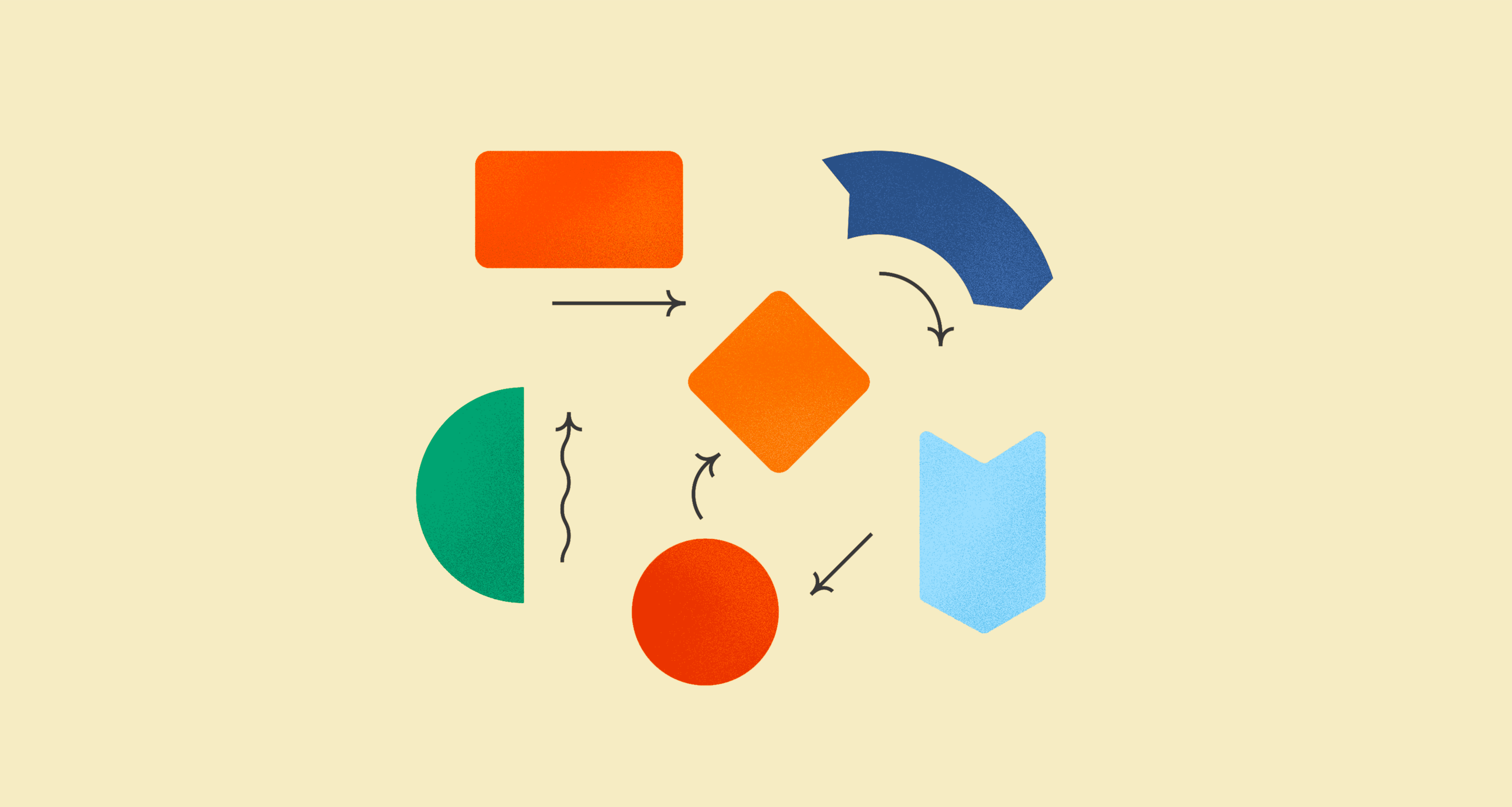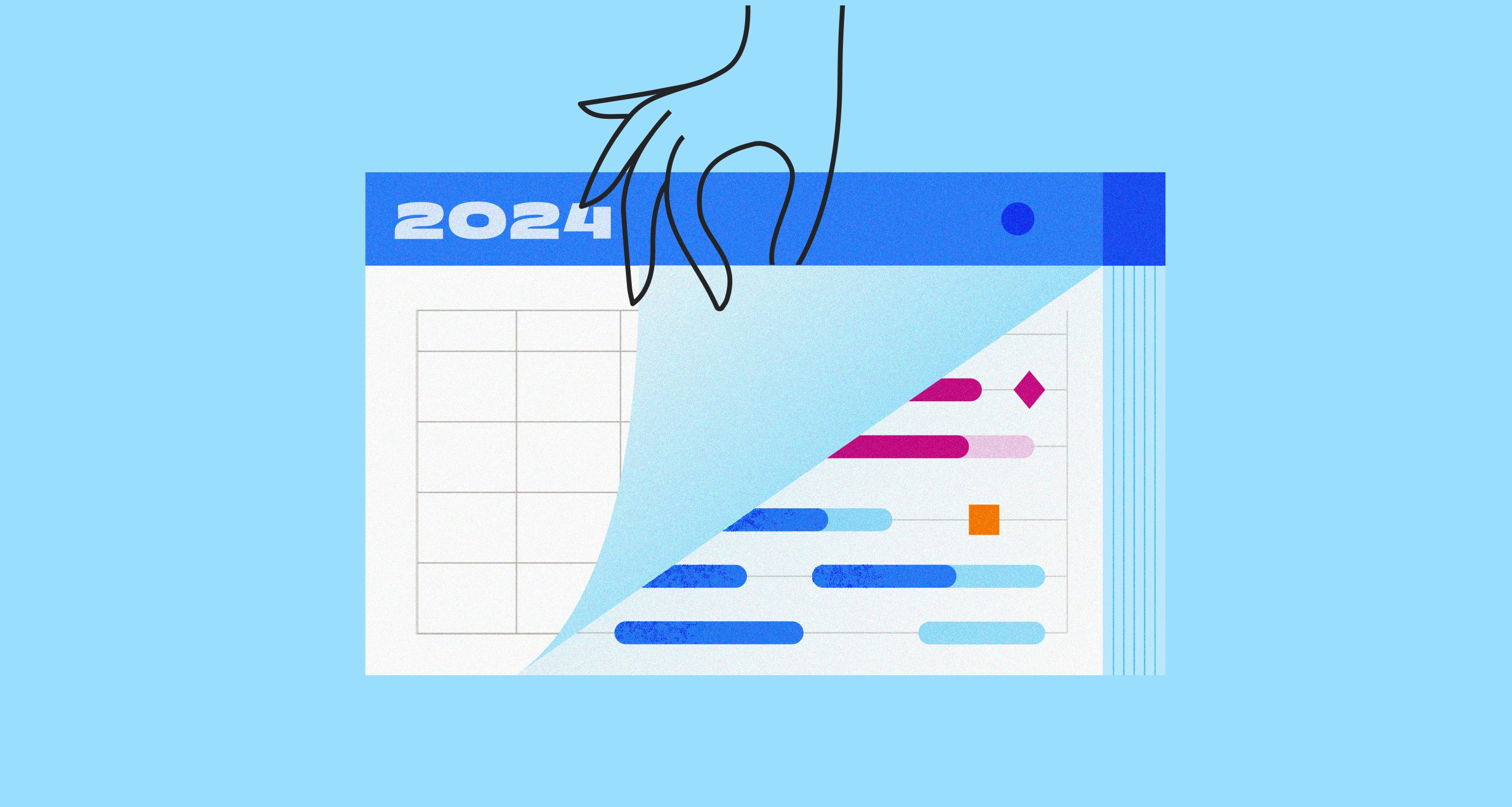What is the product development process?
The product development process refers to the full spectrum of activities that starts with the seed of an idea and turns that innovative thought into a market-viable product.
While there is no universal framework, the most common iteration of the process development process focuses on six stages, including market analysis to validate customer demand, define the product's core value, and create a product roadmap, which in turn leads to the development of the MVP (minimum viable product).
Which roles are best positioned to take part in the product development process?
As you might imagine, a product manager typically leads strategy and oversees the product development process. However, most organizations find their best results by drawing on the efforts of multiple teams.
While design and development departments are key for effective product development, this work often includes customer service, marketing, and quality assurance input as well.
What are the 6 stages of product development?
Frequently also referred to as the New Product Development (NPD) Framework, the six product development process steps are:
- Ideation
- Definition
- Prototyping
- Initial design
- Validation and testing
- Go-to-market

Understanding stage 1: ideation
This is the blank canvas moment. The product manager — or whoever is acting in that capacity — leads team members in a free brainstorm where all possibilities are welcome. No filters, just everyone dumping their ideas on the table.
don’t let the freewheeling nature of this exercise go off the rails…
While brainstorming sessions can be the catalyst for wonderful innovations, we believe in conscientious idea management that leads to customer-driven roadmaps. Some guiding questions might be:
- What is the customer profile that you want to target?
- What is the problem you want to solve for that customer?
- Do other products in the market already solve this problem?
- Are there gaps in how those competitor products are currently solving the problem?
- What are the most important functions that your product needs?
- What insights emerge from a SWOT analysis and/or feasibility study?
Another option to consider at this stage is the SCAMPER model. The acronym guides you through a series of questions about your existing products, with the intention of reimagining the possibilities. Here are the main SCAMPER prompts and a few illustrative examples:
- Substitute (e.g., glass straws instead of plastic)
- Combine (e.g., a backpack with a built-in water bottle)
- Adapt (e.g., human joint supplements that work equally well for dogs)
- Modify (e.g., luggage that collapses for easier storage)
- Put to another use (e.g., feminine hygiene products were used as filters in face masks during the COVID-19 pandemic)
- Eliminate (e.g., at-home ordering of prescription eyewear, thereby eliminating the glasses retailer role that many optometrists play)
- Reverse/Rearrange (e.g., interchangeable components that turn a kitchen mandolin into a spiralizer and more)
Understanding stage 2: definition
Once the team starts to coalesce around a great idea from the Stage 1 idea soup, some team members will be keen to jump straight into product design. Resist this temptation!
Stage 2 is all about refining the product strategy before any further resources are invested. Key definitions to document at this stage include:
1. Success criteria
Defining your success metrics early on ensures that you can accurately measure and evaluate the project’s success. You might focus on KPIs like conversion rate or average order value, or select more customized goals that suit your industry and product category.
2. Business analysis
This step begins the process of clearly defining the product roadmap. Your business analysis should provide a comprehensive overview of the product distribution strategy, marketing and sales strategy, and a more extensive competitor analysis.
3. Unique selling proposition (USP)
Aim for a single, concise statement that defines the problem that this product is solving and how your product does that better than alternatives.
Keep in mind that competitor products aren’t only those in your exact product category, but any product that currently solves (or nearly solves) the problem for the customer.
For example, the eyelash growth serum now known as Latisse was first a medicated eye drop that treated elevated intraocular pressure. Patients using the eye drop began recommending it to their friends and family for growing longer, fuller, and darker eyelashes. As a result, this eye drop was a competitor to eyelash growth serums, even though it was in an entirely different product category.
4. Marketing strategy
You don’t need to detail every piece of micro content at this stage, but it’s important to start brainstorming the ideal marketing strategy for your product. Discuss the merits of the marketing channels available to you, existing campaigns that could be helpful references, or potential brand collaborations that might support the launch.
Even if it’s likely that your final marketing strategy will need to shift significantly, considering marketing early on helps product teams maintain a holistic view of all the important variables.
Understanding stage 3: prototyping
Next, create a prototype. This is a sample of the finished product, not the market-ready product itself. Having a prototype in hand is often a crucial step for engaging key stakeholders, like media and early adopters.
The goal of a prototype is to have a working model that paves the way for the development of a minimum viable product (MVP), and it usually speeds up the development timeline. Your initial prototype could just be detailed schematics, but for digital products, you’ll likely want to progress to a digital prototype fairly quickly.
It’s very rare to arrive at your finished product after just one prototype, so don’t be discouraged if several attempts are required. Multiple prototype iterations means that you're continuously improving your product, enhancing its overall quality.
The prototyping phase also typically involves further researching and refining your business plan, addressing topics like:
1. Market risk research
Product delays (or at worst, failure) can be prevented by identifying potential risks before the full deployment of development resources. It’s particularly helpful to circulate any identified risks to the team via a risk register.
2. Development strategy
This is your plan for how tasks will be assigned and the timeline for those tasks. There are several best practices for planning tasks and estimating timelines, including the bottom up estimation technique.
Understanding stage 4: initial design
With the MVP prototype in hand, you’re ready to advance to a full mockup of the product. Key actions needed to produce the initial design are:
1. Resourcing
Physical products will need to source materials, establish manufacturing and other vendor relationships, and determine which materials to order and which to create on your own.
For digital products, this stage might include seeking additional UX/UI design resources, selecting a server farm or preparing your own data infrastructure to accommodate the new product, signing monitoring and software maintenance contracts, or sourcing a formal cohort of beta testers.
2. Update stakeholders
Maintaining consistent communication with the entire product team is another way to confirm that your initial design is headed in the right direction. Circulate weekly or even daily status reports to keep all product stakeholders informed, and to invite any necessary approvals.
Internal progress reports can also be repurposed into external-facing marketing materials that build anticipation and excitement for your product.
3. Gather feedback
Time for feedback! At a minimum, this should include senior managers and all product stakeholders. However, some organizations use this stage as a soft or Beta launch to also get customer feedback on the product’s functionality and user experience.
Pro-tip: Instead of broadly asking, “What do you think?”, create a standard list of questions to organize and manage responses. Make sure that at least one of the questions invites constructive criticism.
Understanding stage 5: validation and testing
Even if the initial design phase produces rave reviews, your product needs to be more rigorously validated and tested before moving onto a full market launch.
To ensure that every element is functioning effectively, complete the following:
1. Concept development and testing
A successful prototype is not the same thing as a market-ready product. During concept development, you will invariably identify issues – from development to marketing – that need to be resolved before the product is ready for a full launch.
For digital products, this might require software development or design revisions.
Ask internal team members to test the product’s functionality, and even if you did a Beta test during the initial design stage, we recommend inviting another group of Beta users to assess the product’s functionality. Test, test, test.
2. Test the front end
Also make sure to test the front-end functionality for code risks, GDPR/data privacy compliance, and other potential consumer-facing errors. This includes ensuring that any eCommerce functionality is stable enough for launch.
3. Test marketing
Yes, even marketing plans need to be tested. Validate your strategy and its associated tactics. On the technical side, this would also be the time to ensure that all campaigns are optimized, categorized appropriately, and ready to hit “Publish!”
Understanding stage 6: go-to-market
It’s finally time to implement your go-to-market strategy. This is where you’ll commercialize your concept and officially launch it on your website.
At this point, you’ll be working on things like:
1. Product development
Having completed multiple prototypes and rounds of revisions and updates, you’re now ready for full production of your physical product, or final development for software products.
Make sure that your development team is working with the final prototype and MVP iterations, so that the most up-to-date specifications are used.
2. eCommerce implementation
Making all the digital components of your product “live” requires additional layers of testing to be certain that the live product is functioning as it did during the earlier front-end testing phase.
3. Ongoing marketing
Although your marketing strategy should already be at the implementation stage, marketing is not a one-and-done activity, so it’s important to consider if/how product teams need to support ongoing marketing efforts.
Product-led marketing campaigns can be very effective, which requires ongoing collaboration between product and marketing teams.
And there you have it! Your final product is out there in the market.
But after you pop some bubbly to celebrate, make sure to revisit those success metrics you established early on. This helps to gauge team performance, and also identify improvement opportunities for subsequent projects.
How to make the most of your product development process
There's no "one size fits all" approach to developing a profitable product, but the best product teams tend to recommend the following tips:
- In one sentence, clearly define the problem that your product is solving. If you need paragraphs and paragraphs of description to show how you’re alleviating a frustration for the end user, do not pass GO.
- Honesty check: How thorough was your market research? Did you get user feedback from a variety of sources? And did you use any of those insights to refine the product, or simply to give yourself a pat on the back?
- Leverage your company’s hive mind to continuously improve your ideas and solve problems. Share product development updates regularly and encourage a culture of open conversation. The smallest comments can lead to the biggest aha moments.
- Excel is wonderful, but a spreadsheet is not a sophisticated enough tool for roadmapping product development. Track progress and ensure visibility through all levels of your organization with a roadmapping tool that lays out the production timeline while supporting collaboration.
- Unrealistic production timelines can lead to poor quality, missed opportunities, and employee burnout. Constantly check in with cross-functional teams as to whether your timeline is reasonable.
The unique context of your organization will inform your ideal path for bringing a new product to market, but using this product development process helps ensure that your product will become a reliable profit center for your organization.
To learn more about building a roadmapping process, read our eBook https://roadmunk.com/roadmunk-way-ebook
Once you have your research in hand, choose the roadmap best suited to your needs here: https://roadmunk.com/roadmap-templates









